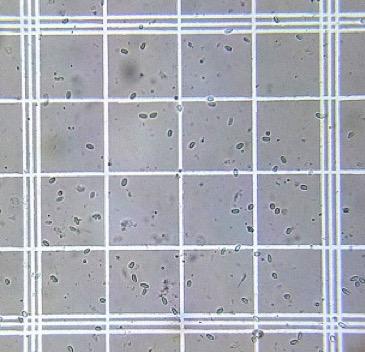A guide to quantifying the honey bee pathogen, Nosema, in colonies
Regular subscribers to this blog may have noticed multiple mentions of Nosema in recent posts of the Beekeeping Management Calendar. These recommendations have highlighted the importance of monitoring and treating for Nosema in honey bee colonies from late winter through early spring when the pathogen can be especially problematic for bees and beekeepers.
If your colony is suffering from high Nosema levels, you may see:
- shortened lifespans of worker bees,
- pronounced hunger of worker bees (bees begging to be fed by their sisters more often).
Colonies, however, often do not show outward signs of infestation until the colony is already significantly weakened.
The most accurate way to diagnose Nosema infestation in your colony is by actually looking for the spores.

Nosema spores cannot be seen with the naked eye and must be counted using a microscope. The extension document “How to Quantify Nosema Spores Infection Rate in a Honey Bee Colony” provides a full list of the materials needed and details the steps that you can take to diagnose your own colonies.
Some of the required supplies (like a compound microscope) may be cost prohibitive for an individual beekeeper. However, Nosema quantification can be more affordable if several beekeepers or beekeeping clubs purchase these larger items to share.
Read “How to Quantify Nosema Spores Infection Rate in a Honey Bee Colony” here: http://edis.ifas.ufl.edu/in1123
Questions? Join the discussion on our Facebook Page.
 0
0
